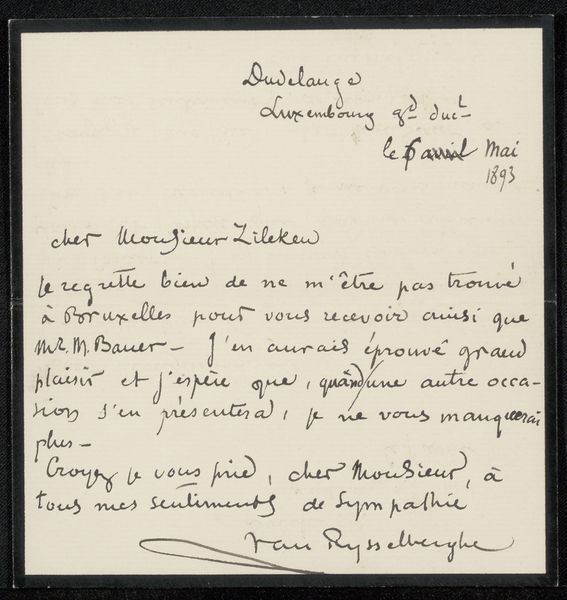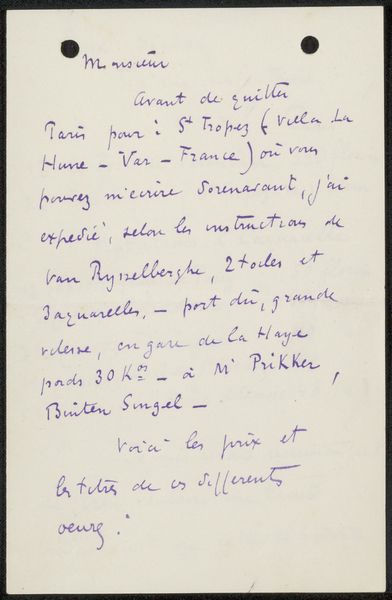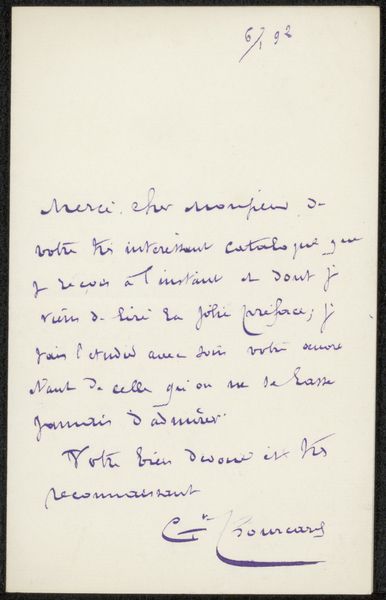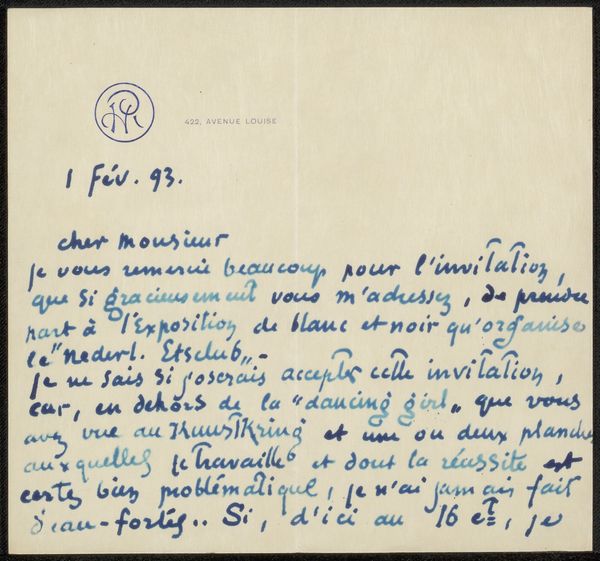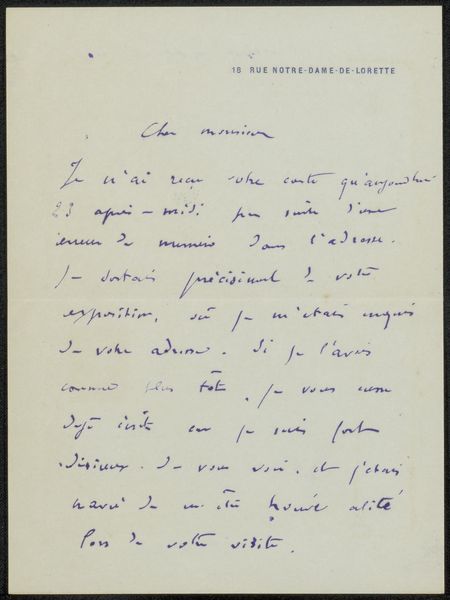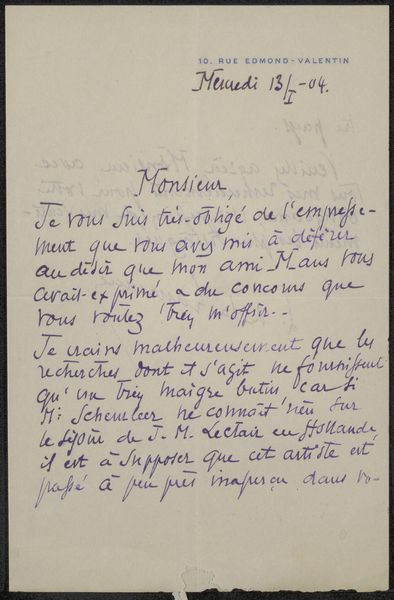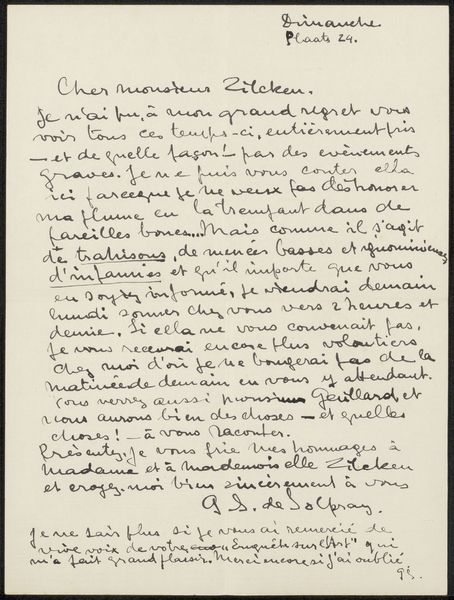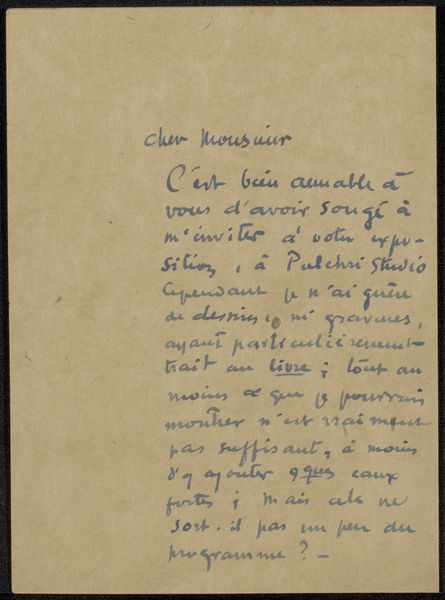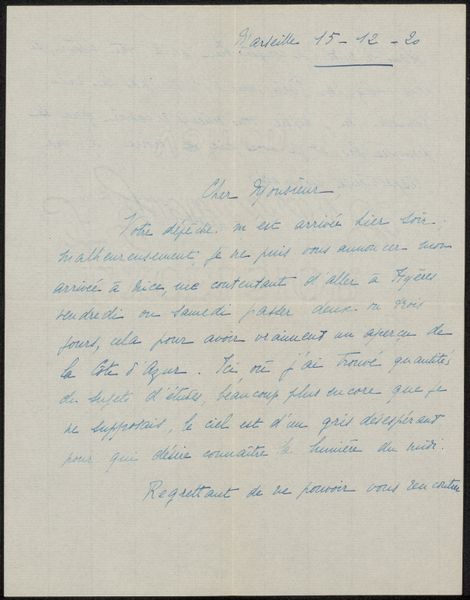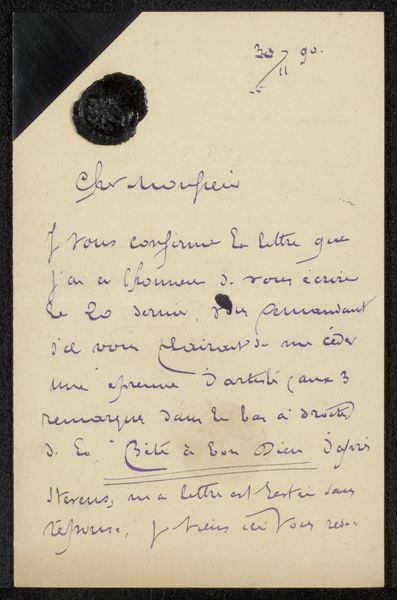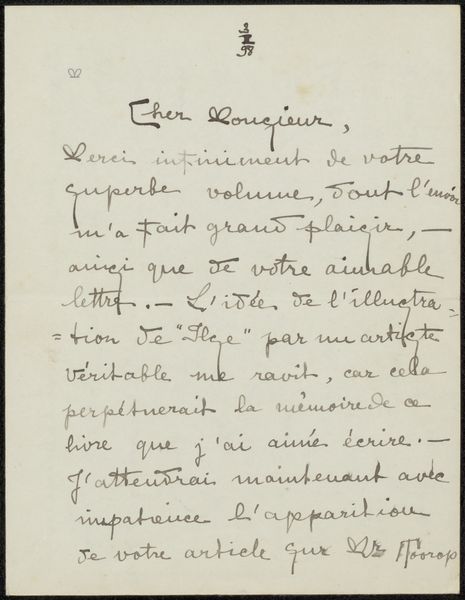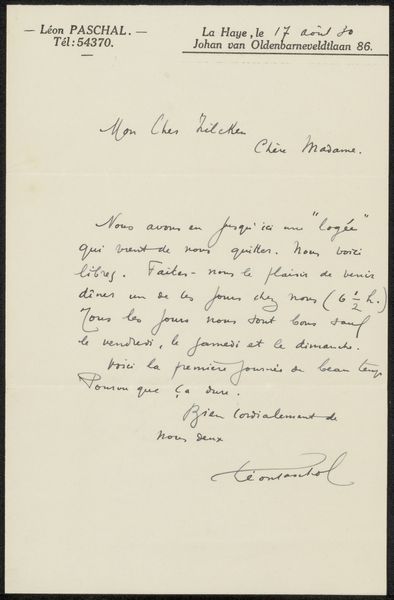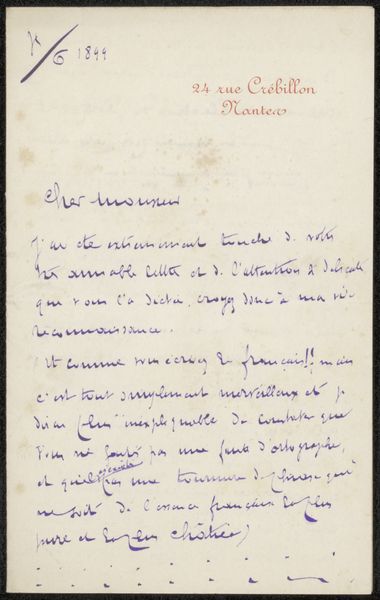
drawing, paper, ink
#
drawing
#
paper
#
ink
#
symbolism
#
post-impressionism
Copyright: Rijks Museum: Open Domain
Editor: Here we have "Brief aan Philip Zilcken," or "Letter to Philip Zilcken," thought to be from 1893, made by Théo van Rysselberghe. It's ink on paper, and the neat cursive gives it an immediate sense of intimacy. The somber, dark ink also hints at a more serious tone, despite its everyday form. What feelings or deeper meanings does this letter evoke in you? Curator: You know, it’s fascinating how a simple note can transport us. To me, this letter whispers of the Symbolist movement, where artists explored inner worlds and emotions through subtle suggestion rather than direct representation. The very act of writing, in that period, felt almost sacred, didn’t it? This wasn’t just communication; it was an intimate sharing of the soul, you see? Editor: Definitely. Knowing that it may relate to Post-Impressionism too adds to its appeal. Curator: Precisely! Rysselberghe, teetering between Impressionism and Symbolism! He seems to be grappling with the constraints of reality and expressing his melancholy over missing an exhibition, perhaps. Think of it – each stroke of ink, a deliberate dance between conveying information and hinting at deeper currents. Doesn't that handwritten script feel so…personal? Do you get a sense of how urgent, or perhaps resigned, he sounds? Editor: I can see that. It's a window into a specific moment. I didn't think I'd find it so intriguing, a handwritten letter of all things! Curator: Isn’t it wonderful how something seemingly mundane can be so revealing? Like catching a glimpse into another person's world for a fleeting second.
Comments
No comments
Be the first to comment and join the conversation on the ultimate creative platform.
